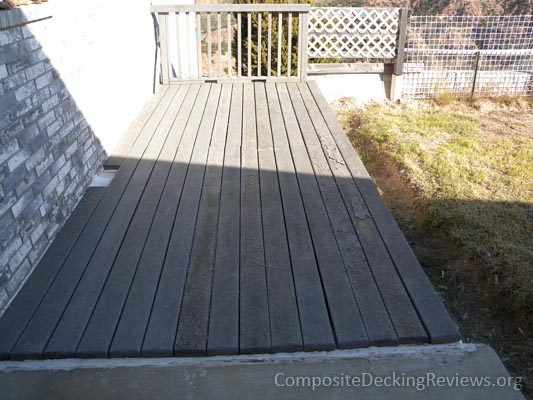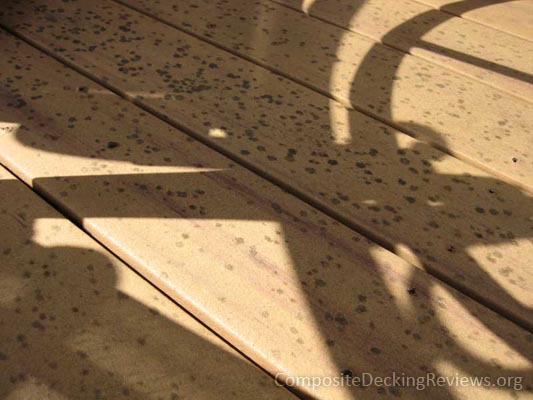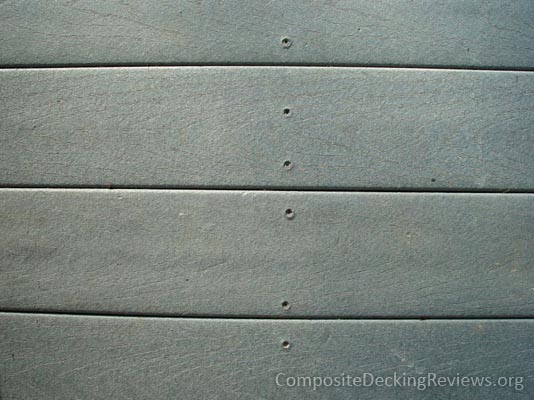Composite decking has a long history of problems. These issues continue to arise in spite of the manufacturing companies’ attempts to improve their product. If you install a composite deck, here are some of the things you can expect:
Delamination

This is the result of water getting through the plastic and into the wood fibers. The boards expand and shrink, causing the plastic binder to break down. What you’ll notice on a delaminated composite deck is flaking and, in extreme cases, splitting.
Fading
This is caused by exposure to the sun’s UV rays. It’s primarily just an aesthetic problem, but who wants an ugly deck?
Mold

This can be a problem with traditional wood decking as well, but composites take it to the next level. The wood fibers soak up water like a sponge, and within months or weeks of installation, dark spots can appear on the surface. These spots can be difficult to remove, often requiring the use of harsh chemical cleaners, and more often than not the mold simply returns a few weeks later.
Swelling

This moisture-related problem frequently occurs around screws and the ends of capstock boards—basically, anyplace where the inside of the board has been exposed. You can avoid screw hole swelling by using a hidden fastener system, but there’s not much to be done about end swelling.
Heat Retention
Composite decking is known for getting very hot in the sun, which poses the risk of burning your feet. Manufacturer’s advice? Choose lighter colors (but what if I like the look of dark decking?) and less dense boards (this strikes me as compromising the deck’s strength). Oh, and never walk barefoot on your deck. That’s hardly a solution; what if you have a poolside deck?
These are all problems presented by composite decking. While it’s true that some of them are shared by wood, composites seem to suffer from them worse. Also, many of the comparisons only seem to take into account lower-end woods like pressure treated, when there are far better wood options available, like ipe or cumaru, that don’t suffer from the problems inherent in composite or pressure treated decking.
my MIL had IPE decking installed 3/4 months ago, but 3/4 months later the boards appear to be delaminating and random little ‘worm’ holes have appeared, larger than typical indoor woodworm, perhaps the size of a nail… i thought it might be composite ipe because of the delamination – but that doesn’t make sennse with the worm holes – any ideas?
I can just about guarantee that whatever it is, it isn’t real ipe. Real ipe is too hard for bugs to chew through.